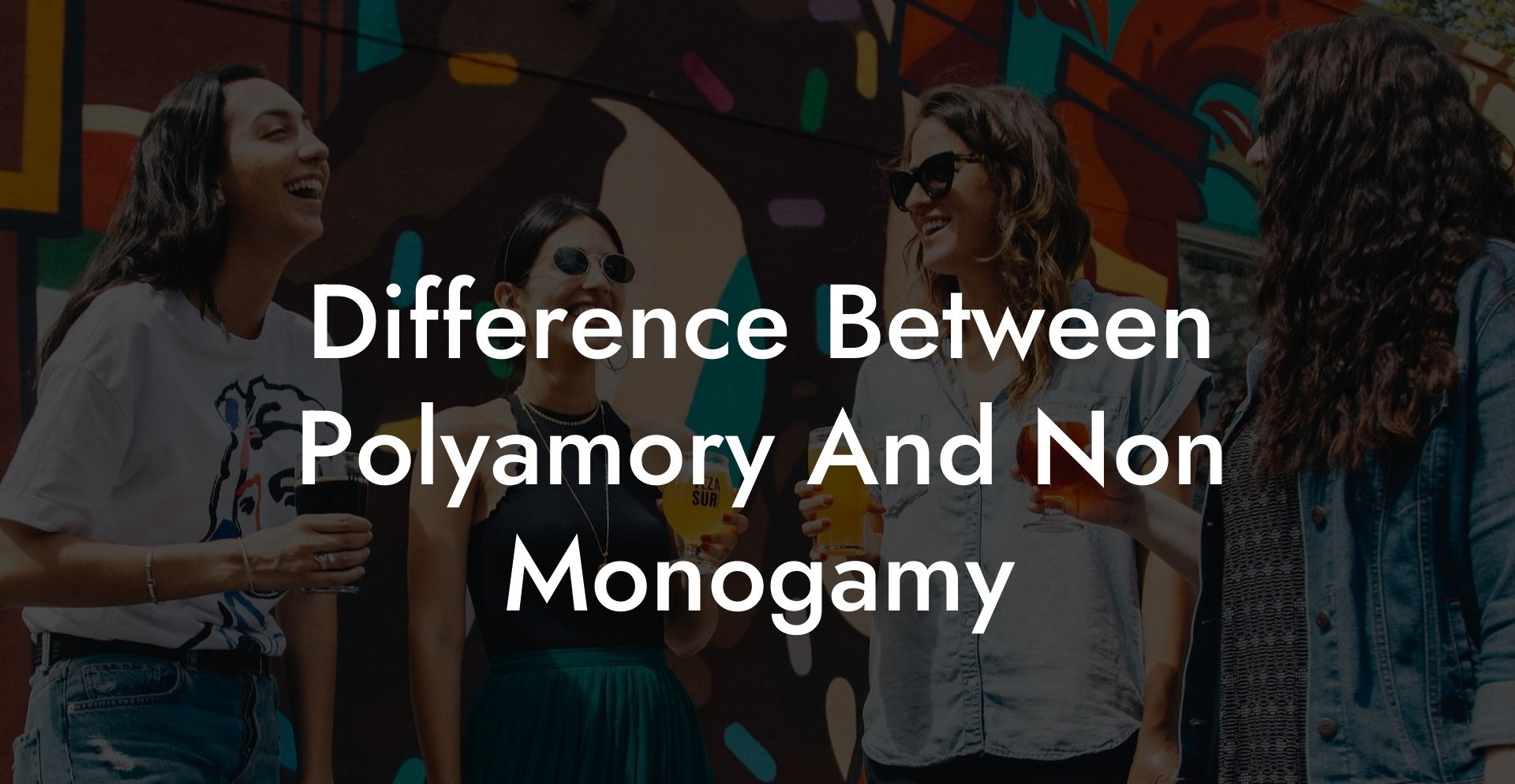Have you ever been curious about the difference between polyamory and non-monogamy? We often hear these terms being thrown around, and though they share some similarities, there are some key distinctions worth noting. In this comprehensive guide, we will break down the complex world of alternative relationship structures to give you a better understanding of what it means to be polyamorous or non-monogamous. Strap in and get ready for a journey beyond the confines of monogamy!
Difference Between Polyamory And Non Monogamy Table of Contents
What is Monogamy?
Before we dive into polyamory and non-monogamy, let's first establish a understanding of what monogamy is. Monogamy refers to a relationship structure where both partners agree to only maintain a romantic and/or sexual relationship with each other. The majority of cultures around the world predominately practice monogamous relationship models.
Defining Non-Monogamy
Non-monogamy, as the term suggests, is the opposite of monogamy. It refers to any relationship arrangement that does not exclusively involve romantic and/or sexual relationships with only one partner. Non-monogamy includes various forms, such as casual relationships, open relationships, swinging, and polyamory.
Casual Relationships
In a casual relationship, individuals may engage in romantic or sexual interactions without a commitment to forming a deeper emotional connection. This form of non-monogamous relationship is typically not lasting or intended for long-term purposes.
Open Relationships
Open relationships are committed relationships where partners agree that they are allowed to have sexual relationships with others. Although this type of arrangement allows for multiple sexual partners, there may be specific limitations or boundaries agreed upon by the individuals involved.
Swinging
Swinging involves committed couples engaging in sexual activities with other couples or individuals, often at swing clubs or gatherings. Although swingers might form friendships with others in the community, their primary relationship remains their committed partnership.
Understanding Polyamory
Polyamory is a specific form of non-monogamy that involves having multiple romantic and emotional relationships. It's characterized by consensual, ethical, and responsible practices, with everyone involved being open and honest about their relationships with one another. Polyamorous individuals maintain more than one loving and committed relationship at a time, with the full knowledge and consent of all parties involved.
Polyfidelity
Polyfidelity is a type of polyamorous relationship where all partners agree to be faithful within their polyamorous relationship. This may involve everyone being romantically or sexually involved with each other, or it may involve individual dyadic relationships between members without further external relationships.
Hierarchical Polyamory
In hierarchical polyamory, relationships are ranked in terms of importance. Primary relationships, typically the most long-term relationships, take precedence over secondary or tertiary relationships.
Solo Polyamory
Those who practice solo polyamory prioritize their individual autonomy and do not seek to form a primary, live-in, or hierarchical relationship with any of their partners.
Difference Between Polyamory And Non Monogamy Example:
A great example that highlights the difference between polyamory and non-monogamy can be found in two fictional couples. Lisa and Adam have an open relationship; they are committed to each other but have agreed to allow sexual relationships with others while maintaining clear communication and boundaries. On the other hand, Sarah, Alex, and Max are in a polyamorous triad relationship. They all share equal love and commitment to one another, making decisions as a unit and considering everyone's needs and emotions.
So, there you have it – a comprehensive guide to the differences between polyamory and non-monogamy. Both of these relationship structures challenge the traditional idea of a monogamous partnership and offer a more fluid way to engage with people romantically and sexually. If this guide has piqued your interest, we invite you to share it with friends and explore more articles on The Monogamy Experiment. Who knows, you might discover a relationship structure that aligns perfectly with your needs and desires!













